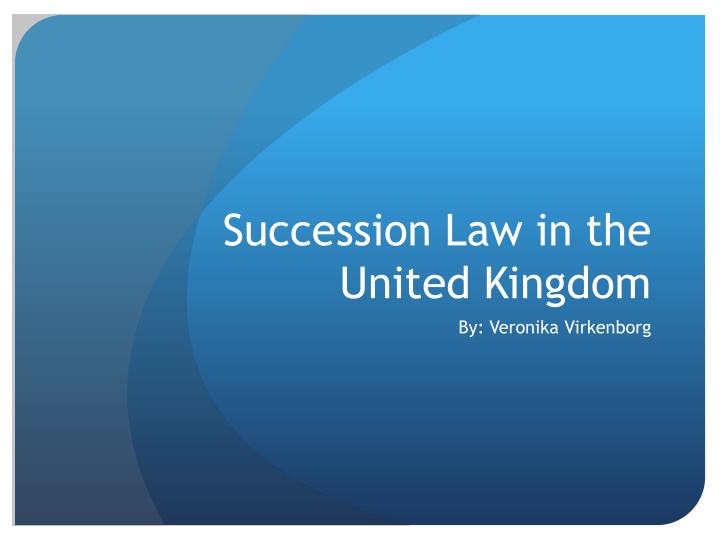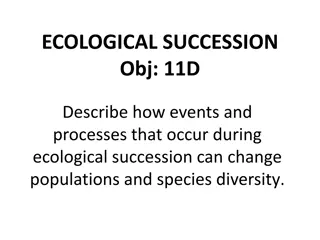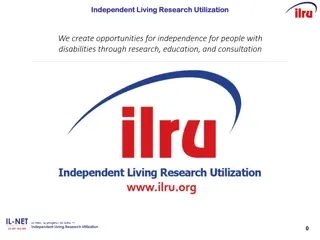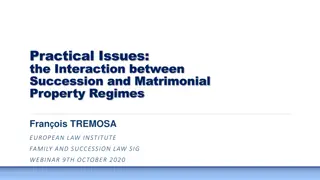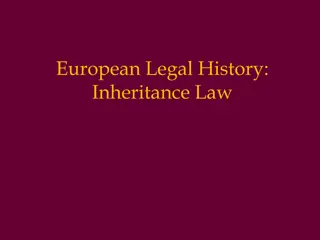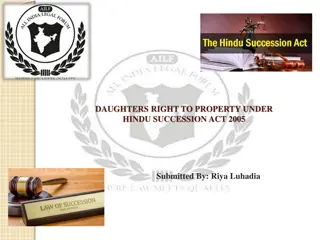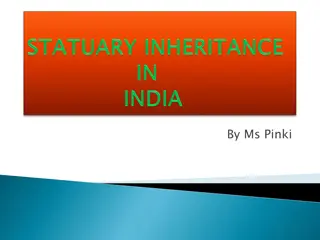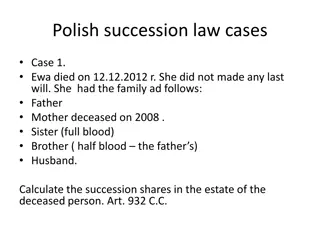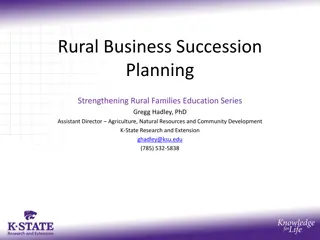Succession Law in the United Kingdom: An Overview
This overview delves into the intricacies of succession law in the United Kingdom, covering topics such as intestacy, historical background, current laws, division of property, and more. Understanding the rules governing inheritance can help individuals navigate the complexities of estate planning and ensure their assets are distributed according to their wishes.
Download Presentation

Please find below an Image/Link to download the presentation.
The content on the website is provided AS IS for your information and personal use only. It may not be sold, licensed, or shared on other websites without obtaining consent from the author.If you encounter any issues during the download, it is possible that the publisher has removed the file from their server.
You are allowed to download the files provided on this website for personal or commercial use, subject to the condition that they are used lawfully. All files are the property of their respective owners.
The content on the website is provided AS IS for your information and personal use only. It may not be sold, licensed, or shared on other websites without obtaining consent from the author.
E N D
Presentation Transcript
Succession Law in the United Kingdom By: Veronika Virkenborg
Introduction Succession, also so called inheritance. In Civil Law called the Law of Succession In Anglo-American Common Law there is a distinction between descent of real estate and distribution of personal estate.
Intestacy The condition of the estate of a person who dies owning property without having made a valid will or another binding declaration. May also apply where a will or declaration has been made, but only applies to a part of the estate.
Historical background Common law clearly distinguished between real property and chattels. Real property without will disposition were passed by the law of kinship and descent. Chattel property without will disposition were passed to the crown or given to the Church for charitable purposes.
Current law In most common law jurisdictions, the law of succession is patterned after the common law of descent. Property goes to, in the following order: 1. Spouse 2. Children 3. Children's descendants 4. Parents 5. Siblings 6. Sibling s descendants
Current law Today, if the person that died does not have any identifiable heirs, the persons estate is generally legally assigned to the Crown.
Current law In the United Kingdom the intestacy rules have been uniform since 1925. Similar rules apply in many commonwealth countries and crown dependencies, such as e.g. Ireland. The rules have been supplemented by the discretionary provisions of the of the Inheritance Act of 1975, The Provisions for Family and Dependants. In order to provide fair provisions for dependent spouses or other relatives.
Division of property If no children, grandchildren or great-grandchildren then the spouse or civil partner inherits all personal belongings, the entire estate since October 2014, earlier the first 450,000 of the estate and the half of the amount above 450,000. If there are children, grandchildren or great- grandchildren then the spouse or civil partner inherits all personal belongings, the first 250,000 of the estate and then half of the remainder since October 2014, earlier a lifetime interest in half of the amount above 250,000.
Division of larger estates The spouse will not receive the entire estate when it come to larger estates, if the decreased left other blood relatives but no will. The spouse will in that case receive the following: 1. All property passing to them by survivorship. 2. All property passing under the terms of trust. 3. A statutory legacy of a fixed sum. 4. A life interest in half of the remaining estate. The children or more distant relatives if there are no children, will be entitled to half of the estate remaining immediately and the remaining half on the death of the surviving spouse.
Inheritance taxes In the United Kingdom there is an inheritance tax which is a transfer tax. Introduced with effect from 18 March 1986, replacing the Capital Transfer Tax. Paid if a persons estate is worth more than 325,000 when they die, that is the inheritance tax threshold. The rate is 40% on anything above the threshold. May be reduced to 36% if more than 10% of the estate is left to charity.
Forced heirship Where a person dies without leaving a will, rules of succession of the persons place of residence apply. Principality where the property is located to have jurisdiction regardless of the descents residence. Not found in common law jurisdiction. Since rules of succession without a will play a back up role in the common law where an individual has not exercised his/her right to dispose of property in a will.
Sources https://www.gov.uk/wills-probate-inheritance/if-the- person-didnt-leave-a-will http://www.britannica.com/EBchecked/topic/288190/i nheritance https://www.gov.uk/inheritance-tax/overview http://www.bbc.com/news/uk-29436533
